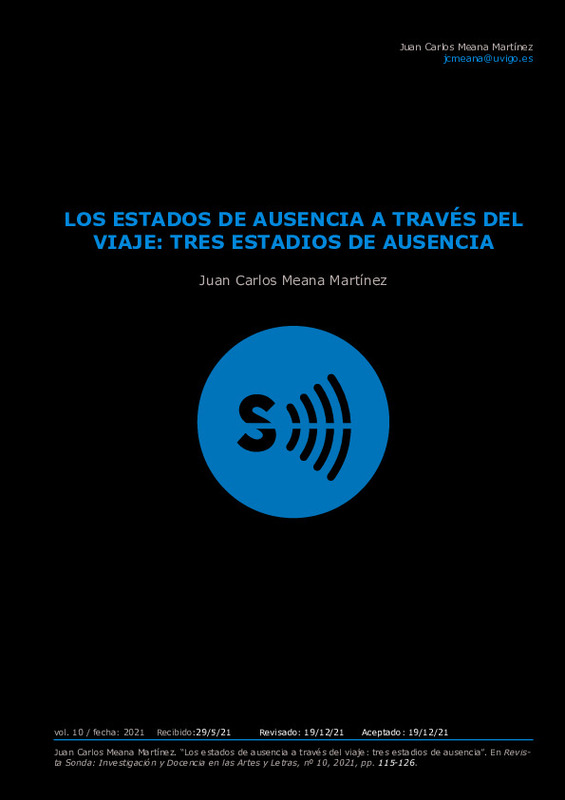|
Resumen:
|
[EN] The author explores states of absence fostered by travelling as a creative experience. A state of absence is initially described as a position of the consciousness, a fleeting state that stays just enough to be ...[+]
[EN] The author explores states of absence fostered by travelling as a creative experience. A state of absence is initially described as a position of the consciousness, a fleeting state that stays just enough to be distinguished. The word absence recalls loss, oblivion, desertion, the presence left by absence and the void brought about by its fading.The states of absence, having acquired or become sensitized to them during the journey, are divided into three moments or phases which provide the basis upon which to reflect in particular on the creative act and on the glance in the broadest sense. These three phases or moments of the journey have been spotted when states of absence gain a special prominence. They are previous moments, the prelude to any creative act, when we account for certain initial experiences that occurred while travelling. Later on, out of absence and rejection of representation comes a narrative on the way in which the viewer experiences the contemplation of images found along the way. These images are taken as a starting point from which to aesthetically reflect on the so-called denial of representation. Finally, once the journey has been completed, absence arises when we revisit and visualize the photographic archive as a posteriori document as well as additional notes and remembrances that help create a story about travelling itself. A case study is presented on a sculpture series where secrets are the protagonists of the states of consciousness.
[-]
[ES] Estudiamos los estados de ausencia propiciados a través del viaje, definiendo estos estados como una posición de la conciencia. La palabra ausencia evoca la pérdida, el olvido, la presencia que deja la ausencia provocada ...[+]
[ES] Estudiamos los estados de ausencia propiciados a través del viaje, definiendo estos estados como una posición de la conciencia. La palabra ausencia evoca la pérdida, el olvido, la presencia que deja la ausencia provocada por su desaparición. Estos estados de ausencia, divididos en tres momentos, nos sirven para elaborar una reflexión del acto creativo. Hemos distinguido tres fases donde los estados de ausencia han tomado protagonismo. Unos momentos previos donde damos cuenta de determinadas experiencia iniciales acontecidas en el viaje; posteriormente, desde la ausencia y la negación de la representación, se relata como el espectador experimenta la contemplación de imágenes que sirven para reflexionar estéticamente sobre la denominada negación de la representación; y, por último, la ausencia que se produce cuando revisitamos el archivo fotográfico como documento, además de anotaciones que ayudan a crear un relato. Se presenta un ejemplo práctico sobre una serie escultórica, donde los secretos son protagonista.
[-]
|








